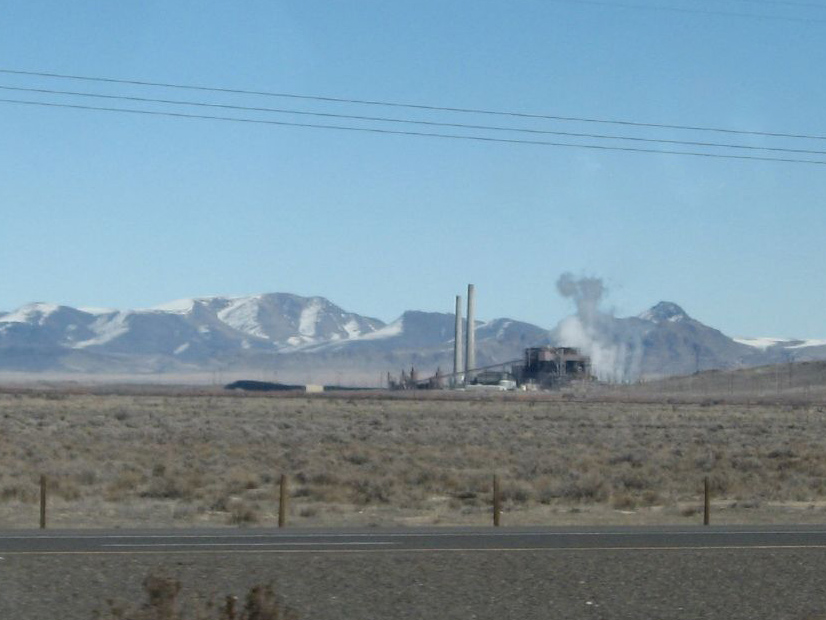
NV Energy wants to convert its last coal-fired power plant to a gas-fueled facility, as the utility continues to be plagued with cancellations and delays of planned solar projects.
The proposed conversion of the North Valmy Generating Station is contained in an amendment to the utility’s 2021 integrated resource plan. The amendment was filed last week with the Public Utilities Commission of Nevada; PUCN is expected to act on the proposal by Feb. 2, 2024.
The coal-to-gas conversion is meant to satisfy PUCN’s request for a “complete solution” for the 522-MW North Valmy coal plant, slated to close at the end of 2025.
NV Energy previously planned to replace capacity lost through the coal-plant closure with two solar-plus-storage projects developed by Primergy Energy — Hot Pot and Iron Point — but those projects fell through.
PUCN then rejected NV Energy’s plan for a 200-MW battery energy storage system as a partial solution to the coal-plant closure, saying it wanted to see a comprehensive plan. (See NV Energy Rejected on Plan to Replace Coal Plant with Storage.)
NV Energy said the gas conversion will reduce carbon emissions by almost 50% at North Valmy, which is near Battle Mountain in northern Nevada.
“Serving Nevada’s rural customers is a critical priority, and the proposed option delivers a reliable and cost-effective option to serve a more remote location that also reduces carbon emissions to respond appropriately to the region’s energy demands,” NV Energy CEO Doug Cannon said in a statement.
NV Energy and Idaho Power each own half of the North Valmy Generating Station. NV Energy’s cost for the coal-to-gas conversion would be $83 million. The utility is asking to run the refueled generating station through 2049.
NV Energy’s IRP amendment also proposes building a 400 MW solar project in Northern Nevada with a 400-MW, four-hour battery storage system. The project, called Sierra Solar, would cost $1.5 billion for solar, storage and interconnections.
In addition, the amendment proposes the purchase of development assets for the Crescent Valley solar-plus-storage project for an undisclosed price.
Solar Uncertainty
In arguing previously for approval of its 200-MW battery storage system, NV Energy said supply chain issues had derailed the Hot Pot and Iron Point solar-plus-storage projects.
In last week’s filing, the utility said the developer “failed to meet key project milestones” and the build-transfer agreement for Hot Pot and Iron Point had been terminated. PUCN had approved NV Energy’s plan to buy Hot Pot and Iron Point from Primergy Solar last year.
In addition, NV Energy said two other solar-plus-storage projects have been canceled: Southern Bighorn and Chuckwalla. Combined with Iron Point and Hot Pot, the four projects would have provided 1,100 MW of solar and 795 MW of battery storage.
NV Energy noted it is negotiating to potentially revive the Southern Bighorn and Chuckwalla projects.
Project delays are another issue. NV Energy said the operation date has been postponed for the Boulder Solar III project, which will provide 128 MW of solar and 58 MW of battery storage.
“Renewable project developers continue to struggle to meet their contractual obligations to the companies to deliver commission-approved renewable projects,” NV Energy said in its filing.
Energy Independence
An overarching goal for the IRP amendment is to advance Nevada’s energy independence and reduce the state’s “exposure to uncertain market resources,” the filing states.
“Cause continues to exist to doubt the availability and deliverability of regional market capacity and energy, and therefore, to limit the companies’ immediate reliance on it on a going-forward basis,” NV Energy said.
The filing takes a “balanced approach” toward energy independence by combining the addition of renewable energy and storage resources with continued operation of natural gas generation, the company said.
NV Energy has been participating in the development of the Western Resource Adequacy Program. And energy independence doesn’t rule out participation in an RTO.
“This effort toward energy independence moves in lockstep with expected resource sufficiency requirements of a future market or regional transmission organization,” the company said in its filing.


